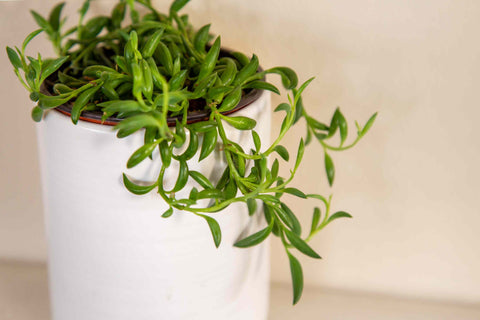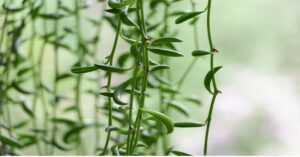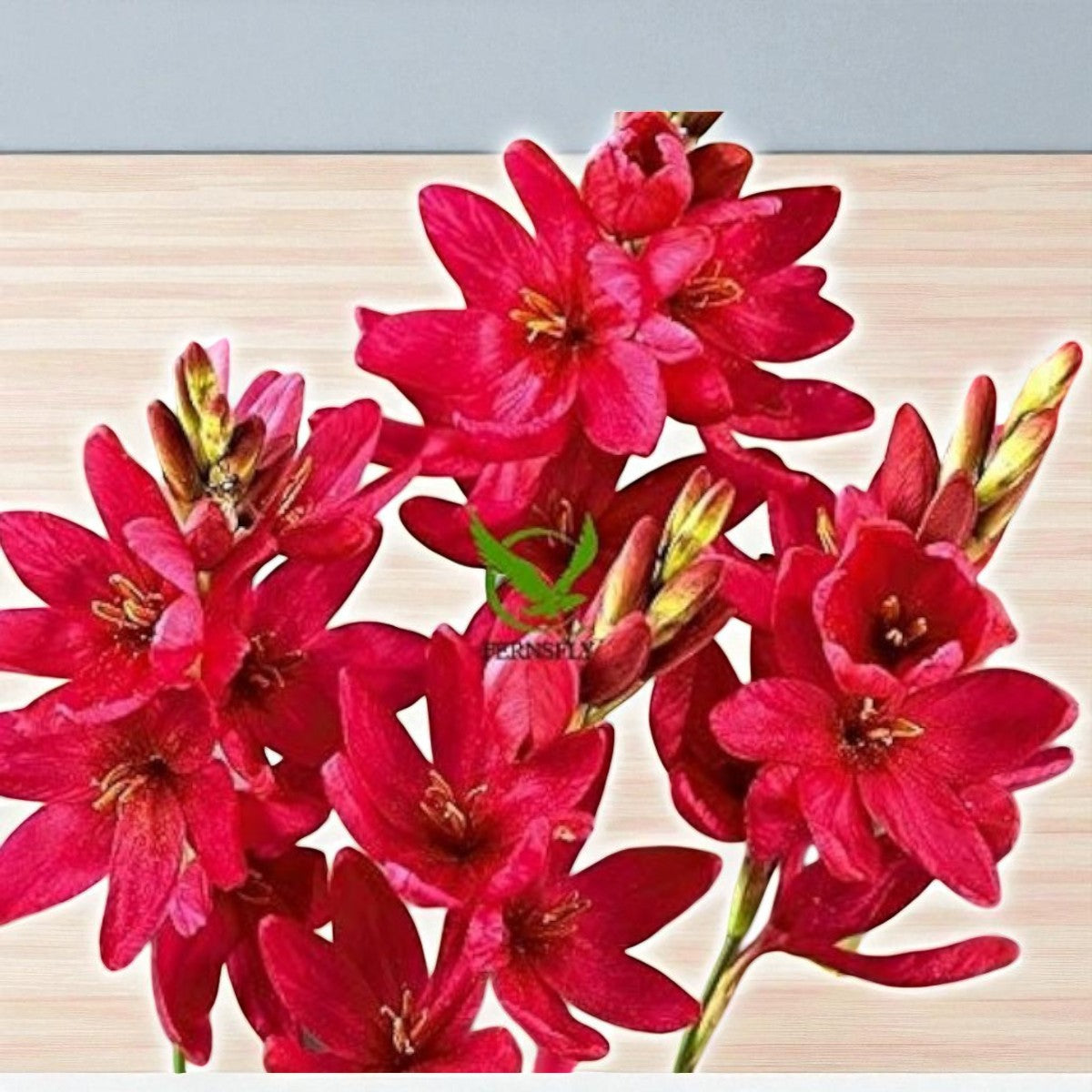
String of Bananas ( How to grow and care )
This is a new trailing succulent plant. The String of banana Plant (Senecio radicans) is actually a close relative of the string of pearls plant , but is known for being fast growing and easy to care for. For anyone who has tried unsuccessfully to keep a string of pearls alive, a string of bananas plant may be a good fit for you.

Native to South Africa , String of Bananas Plant, which is a part of the Asteraceae family, and is characterized by shiny , banana-shaped leaves that grow on long , hanging tendrils. It makes an excellent hanging houseplant , depending on which can be trained to grow upwards on a trellis or moss pole. The string of bananas plant can also be successfully grown outdoors in succulent gardens , but they are not cold-tolerant , so require areas that experience warm weather year-round. string of bananas plants , as with many other types of succulents is grown for the rather interesting foliage of its blooms, which are relatively inconspicuous. Learn how to grow these attractive and low-maintenance succulents .
- Botanical name: Senecio radicans syn. Curio radicans
- Common Name: String of Banana
- Plant Type: Succulent
- Mature Size: 36 inches tall
- Sun Exposure: Full Sun
- Soil Type: Well drained , succulent soil
- Soil pH: 6.6-7.5
- Bloom Time: Spring
- Flower colour: white , light pink
- Origin: South Africa
- Toxicity : Toxic to humans and pets
String of Bananas Plant Care
String of Bananas are fast-growing , low-maintenance succulents that can be enjoyed by beginners and experts alike. They are drought-tolerant, and do not require regular fertilizing , repotting, or pruning. The most important part of growing a plant is making sure succulents get enough light, as they don't grow well in low light conditions. Place the String of Bananas plant in a bright , sunny window and ignore it and it will be happy.
Light /String of Bananas light requirements
When grown indoors , these trailing subtleties need bright , direct light. Choose a location that receives at least six hours of sunlight throughout the day. If this plant is not receiving enough light , it will become stunted and the banana-shaped leaves will grow out significantly along the stem – a look that is often considered less visually appealing.
Soil /String of Bananas soil
The String of Bananas plant requires a well-drained soil mix to help prevent root rot. You can buy premade cactus or succulent soil, or make your own mix at home. A simple mixture of 2 parts potting soil , 1 part perlite and 1 part pumice or sand will provide your plant with adequate drainage.
Water /String of Bananas water
This hardy succulent is considered drought-tolerant with low water needs. There is no universal schedule for how often a String of Bananas plant will need to be watered, as this can depend on many factors , but , as a general rule , the soil should be thoroughly watered between waterings. should be allowed to dry.
It is better to underwater the String of Bananas plant than water, as they are susceptible to rot. Keeping the planted succulent in well-drained soil and making sure the pot has adequate drainage will help prevent root rot.
Temperature and Humidity
While String of Bananas Plants are native to the dry and hot climates of South Africa , they grow well in normal home temperatures and humidity levels. Make sure your plant is kept away from heat or air conditioning vents, as well as drafts or cold windows, so that it is not exposed to any extreme temperatures.
Fertilizer /Fertilizer for Succulents

Is the String of Bananas Plant Poisonous ? (Are String of Bananas Toxic?)
As a part of the Senecio genus , the String of Bananas plant is considered poisonous to cats and dogs , and if consumed, is toxic to humans. If you have pets or small children in your home, keep these trailing plants out of reach. If your pet or child is exhibiting any of the symptoms below, and you suspect they have ingested succulent , seek medical or veterinary care.
Symptoms of Poisoning
- nausea vomiting
- skin irritation
- Diarrhea
- lethargy
How to report String of Bananas Plant ?(Repotting String of Bananas)
The String of Bananas plant does not allow the mind to root, and as a result does not need to be re-allocated regularly. Refreshing the soil once every two years is likely enough for the String of Bananas plant. The spring and summer months are the best times for breeding, as this will give the delicate roots time to recover during the active growing season.
These plants are generally much easier to repot than other hanging succulent species, such as string of pearls , because their leaves do not drop easily. However , care must be taken to ensure that you do not break any of the delicate stems. Have no fear, if you lose some species, however, simply plant the broken stem end in the pot and that end will develop its own roots.
Common Pests and Diseases
The String of bananas plant is not at risk of being a particularly serious problem , but they can be susceptible to the most common types of household pests and diseases. Most notably , watch out for signs of root rot that can result from overwatering . In terms of pests , keep an eye out for sap-sucking pests like aphids , mealybugs and other scale insects , and spider mites. Early detection and proper treatment can help keep these pesky insects under control and prevent full-blown infestations.

